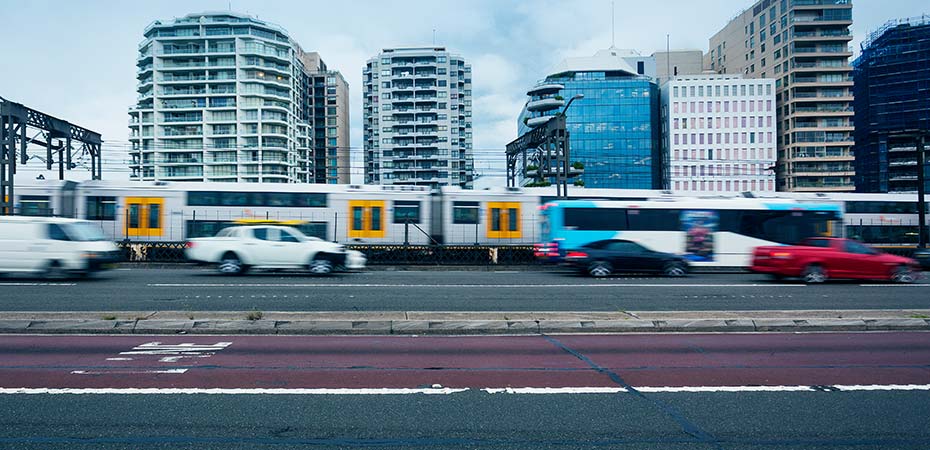As populations grow and society changes, cities need to ensure that they plan and develop with urban mobility and the future in mind.
It was recently reported that Sydney has major plans to reshape its city. Sydney is experiencing accelerated growth and it will soon be difficult for it to cope with the strain.
Sydney has one of the 10 highest costs of living in the world, as well as unaffordable house prices, overcrowded schools, long distance commutes and unreliable public transport. With the population set to double by 2056, parks and other leafier areas are being removed in favour of highway extensions and towering apartment complexes.
The city also suffers from inequality across its regions with two-thirds of the population growth predicted by 2036 to reside in the Greater Western Sydney area. Despite this disproportion in population, jobs and wealth are mainly found to the east of the city.
To combat the strain that population growth is causing, the Greater Sydney Commission (GSC) has released its strategic regional plan that envisions how to balance out the city’s inequalities, improve mobility and transform successfully as the population expands.
The GSC plans for Sydney to be split into three separate urban centres: Western Parkland City, General River City and Eastern Harbour City. The plan anticipates people living within half an hour of their jobs, schools and services such as healthcare. The redevelopment will call for a major investment from across the city’s government with a new airport and connecting infrastructure being included in the plan.
What challenges face city planning?
The impact of population growth is not only causing issues in Sydney. Cities across the globe are experiencing challenges caused by social, technological, economic, environmental and political changes. As new business models and technologies attempt to solve these issues, there is uncertainty regarding how these will impact urban environments.
One of the initial challenges for urban planning is that infrastructure and transport have not altered considerably over the past 50 years. With growth, technology and consumer expectation being catalysts for change, the mobility available in cities needs to adapt before it’s too late and major issues begin to arise and opportunities are missed.
What needs to be considered when planning urban mobility?
Some areas for consideration that need to be included when planning urban mobility are set out below.
Public Transport
Consumers have become more demanding and there is an expectation that public transport should be flexible while still delivering an efficient service. The separation between public and private transport is also becoming less clear as more companies like Uber begin to appear. Despite this, public transport still needs to be accessible to all and cities need to consider partnering with companies like Uber to overcome transport challenges.
Technology
Advancements in technology need to be considered when planning future mobility in cities. As connected and autonomous vehicles (CAVs) become more prominent, cities will need to consider how both digital and physical infrastructure will need to adapt to support them.
Environment
In our report ‘Rethinking Urban Mobility‘, research suggested that transport is responsible for around 32% of the UK’s CO2 emissions. As populations continue to increase, this percentage will only grow if new initiatives are not considered. Cities need to begin to focus more on encouraging activities such as walking and cycling to reduce air and noise pollution.
E-Commerce and Logistics
As society increasingly turns to online shopping, congestion in cities will rise as deliveries take place. City planning will need to consider where efficiencies could be made to reduce the impact that the rise in e-commerce will have on our roads. Opportunities such as autonomous freight systems shifting to unsociable hours will need to be contemplated.
Planning future urban mobility
While mobility is just one aspect that needs to be considered in city planning, it is essential to create a connected and thriving metropolis for the future.
Our whitepaper ‘Rethinking Urban Mobility‘, written in partnership with Arup and Thales, considers the role that cities should play in shaping change and makes recommendations on how to tackle the issue of urban mobility as society and technology changes.
About the author(s)
Gowling WLG is an international law firm operating across an array of different sectors and services. Our LoupedIn blog aims to give readers industry insight, technical knowledge and thoughtful observations on the legal landscape and beyond.

